For some time now, tech industry has taken an active role in trying to solve the gender imbalance problem.
- Organizing conferences for women or by women
- Trying to bring more women into math or cs
- Offering grants and scholarships for Hacker School
- Public scorn for offenders when deserved
- Anti-Harassment policies for conferences
There’s even gender studies in mathematics and other sciences.
But even if the issue has been on the table for a while, I’ve attended a few conferences where I live and the usual attendance looks like this:
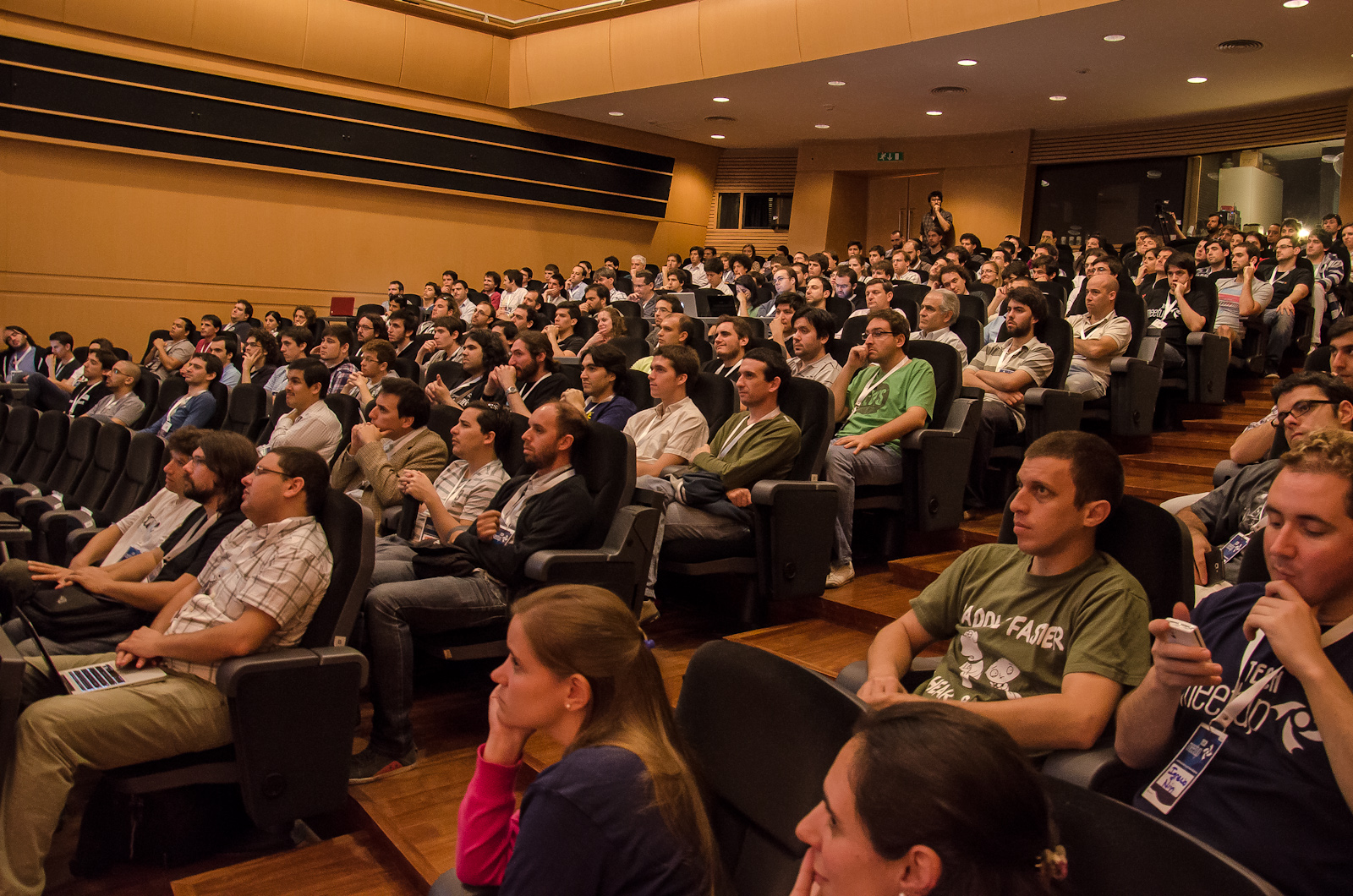
I don’t think you’ll find more than 5 women in the picture.
And I can tell you for sure, that picture does not represent at all the women in tech in the city. There may be an imbalance, but women are not by any means, 0,5% of computer science graduates here.
So women are not participating, but why?
The Data
Since StackExchange has open data you can derive some insights from, I decided to take a look at the problem from a different perspective, and address the question of the underrepresentation using StackOverflow data.
I started with a few questions in mind:
- What % of users are women?
- What’s the question/answer rate for men and women?
- How the reputation score for men and women compares?
- How it compares to ambiguous/unisex names?
- Is in fact SO a gentleman’s club?
Since SO has no gender data, gender needs to be inferred from user names, which is obviously not 100% accurate, many names are unisex or depend on the country of origin. I decided to use this database and program which has names from all over the world curated by local people. In many cases you will get a statistical result: mostly male or mostly female, and that makes sense.
Be warned this is not a scientific study nor tries to be, just trying to see some patterns here.
First Glimpse
First I wanted to get a glimpse of the general trends, so I did a random draw of 50k users, more than enough for what I need.
1 2 | |
StackExchange limits the number of rows returned by the online database browser to 50k, so that’s it.

1 2 3 | |
As you see there’s a 27% of confirmed males and only a 4% of confirmed females. Anonymous users are the usual numerical users like user395607,
and name not found refers to things like ppkt, HeTsH, holden321 and ITGronk, you get the idea.
Then I wanted to see how reputation was distributed among those users, and how that compared against how long the user was using the site.
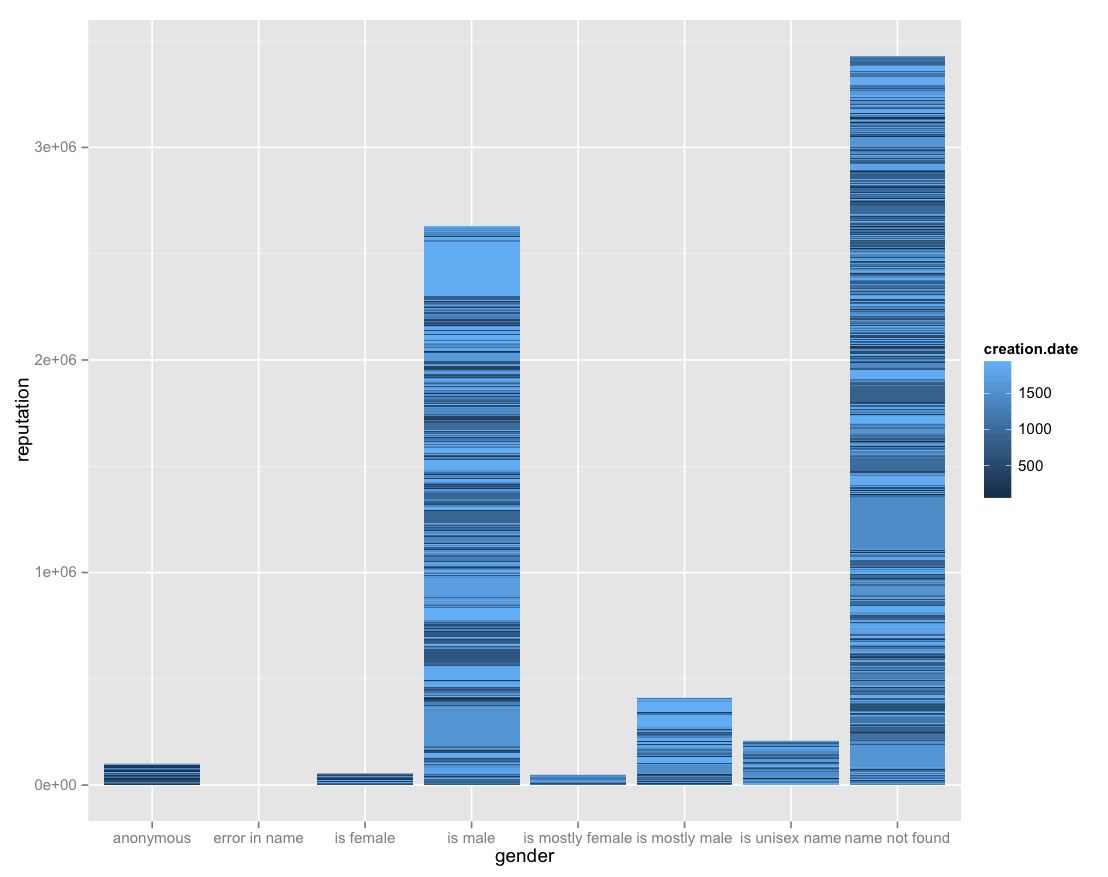
There you go, an image is worth a thousand words, reputation difference among genders is huge, it doesn’t seem to be related to how long you’ve been around either.
Fresh users
To confirm that, I drew randomly 50k fresh users, who joined the site after 2012-10-10, just to see if trends were any different considering only last year data.
1 2 3 | |

1 2 3 | |
Here women seem to be a little bit closer, but still a great difference.
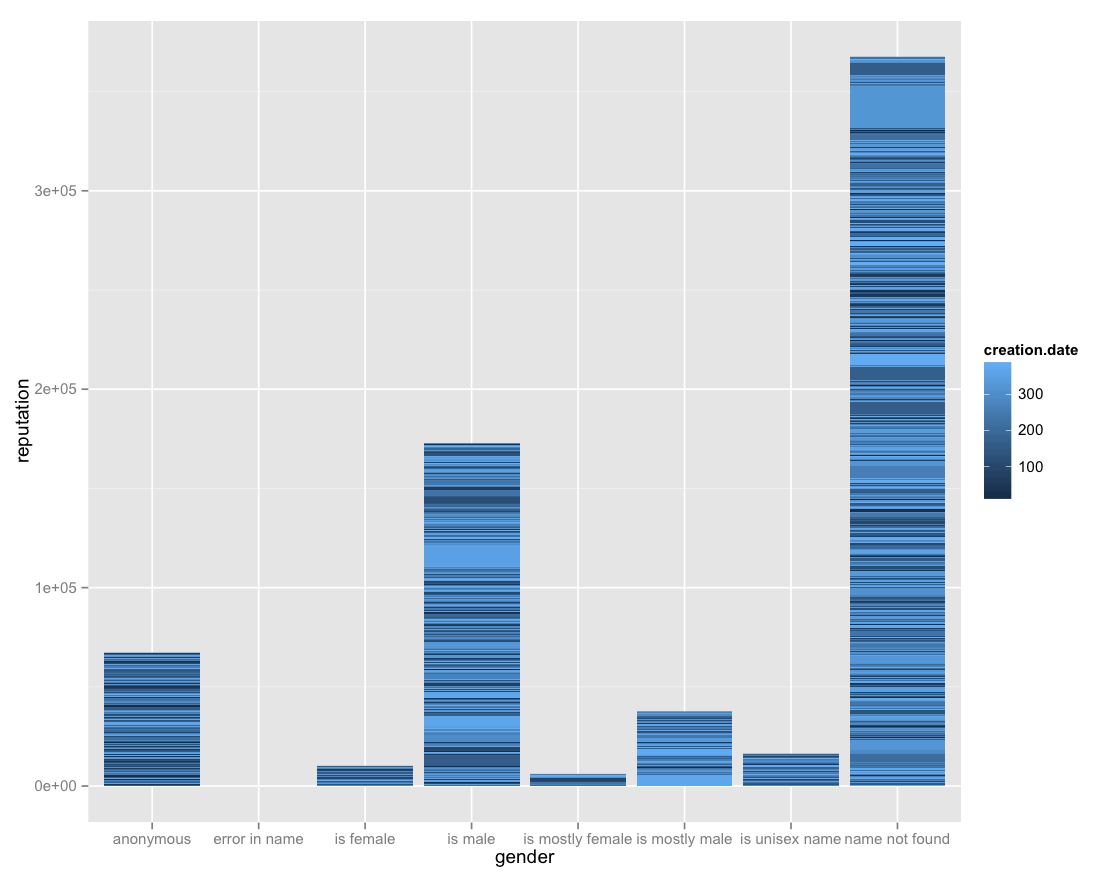
The best of the best
Then I drew the 50k users with the highest reputation score.
1 2 | |
Now we’re seeing some changes:

1 2 3 | |
As you expect here there’s almost no anonymous users, in the online community charity has a name attached to it, ain’t it?
And the reputation trend is still there, something you can readily confirm if you scroll the first pages of the all time user’s reputation page.
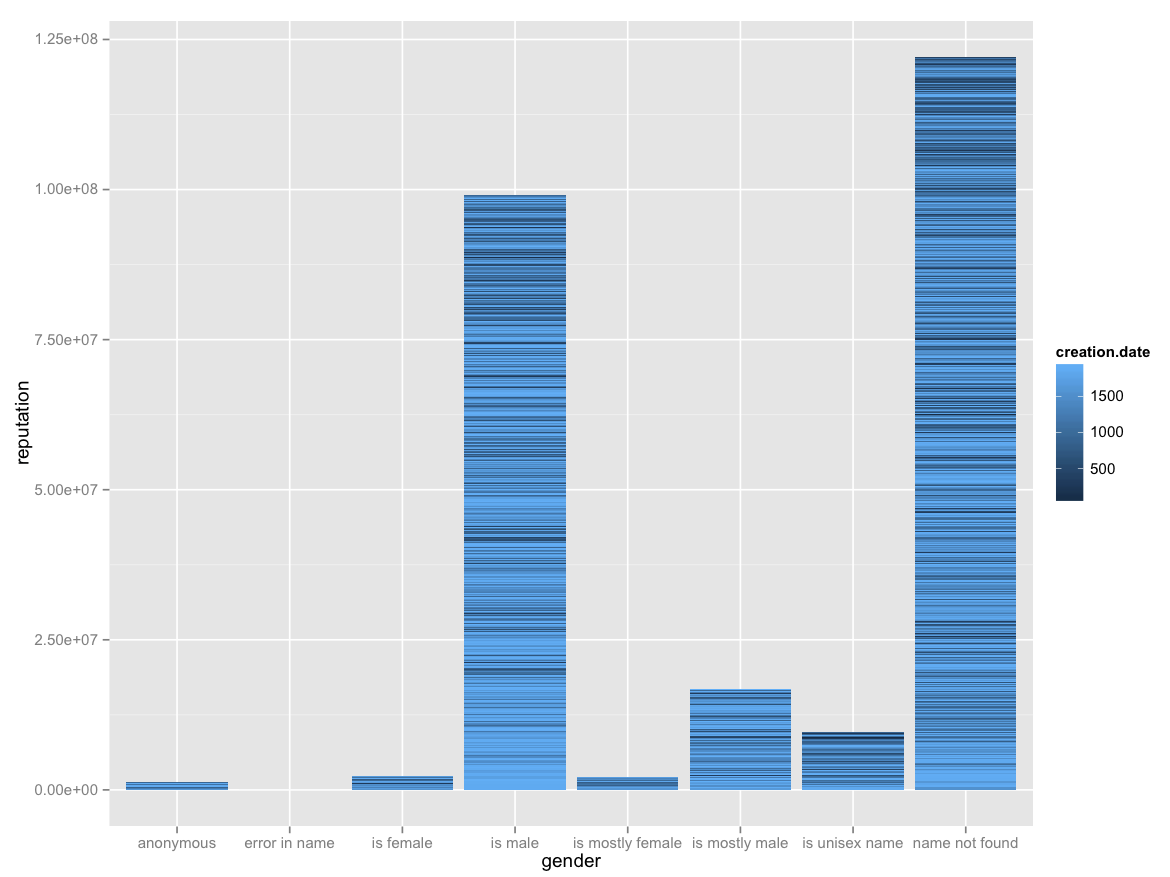
But then I charted the reputation distribution against gender and something interesting arises:
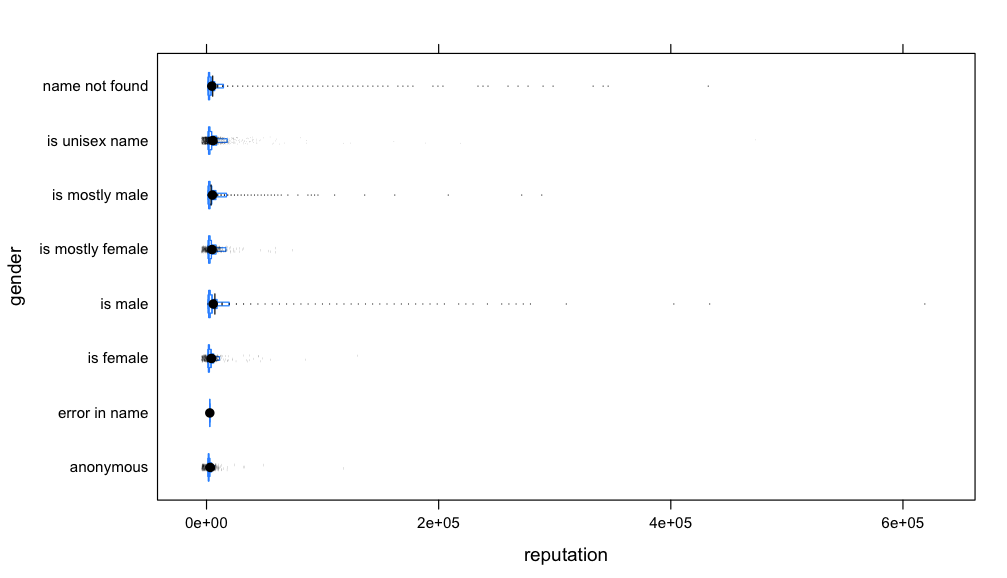
As you see, there’s a great deal of outliers there, with 75% of the top 50k users below 4200 points.
1 2 3 | |
So what happens when we look at the distribution considering the 75% of the users, that are in fact below 4215 points?
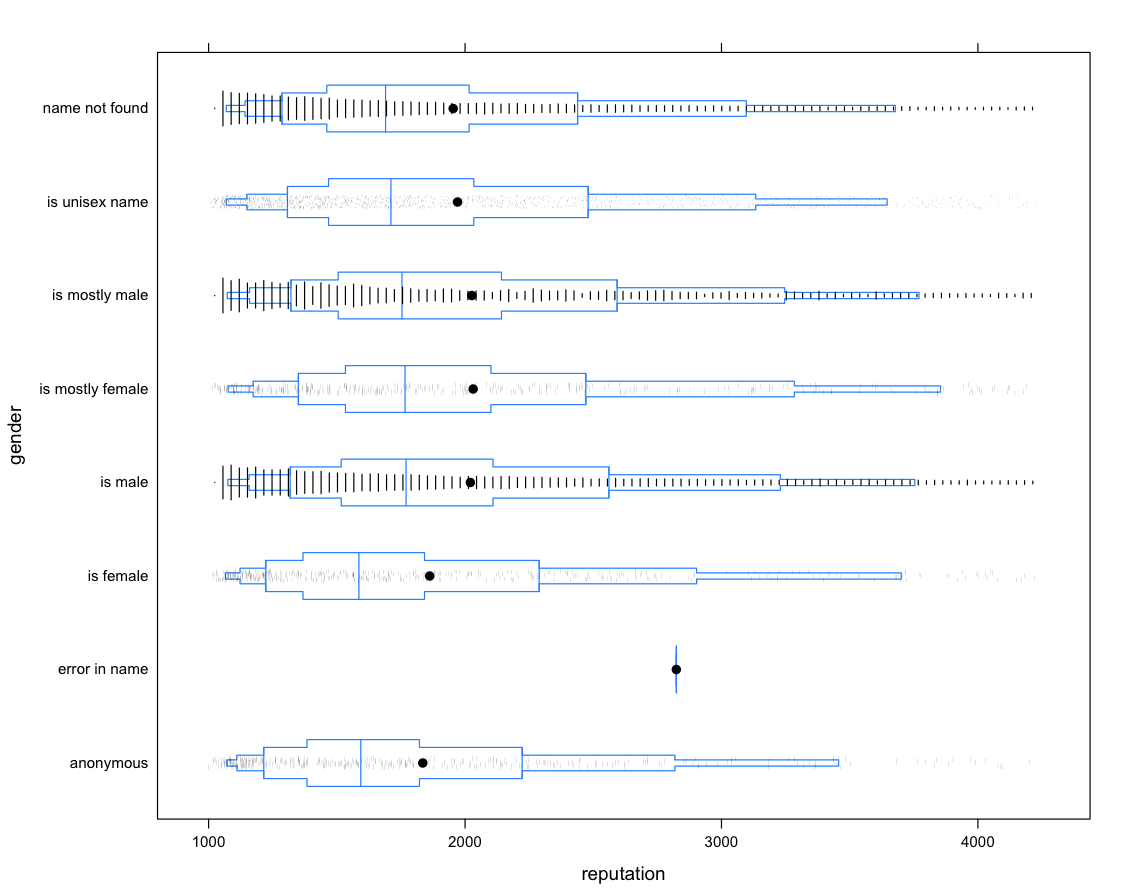
Well that’s something! Now distribution looks pretty much alike.
Seems to me those outliers, that are mostly men, are well beyond everyone else, men or women.
How do you read that data?
Wrap up
At 4% females, SO seems to be suffering the same phenomena occurring in the real world, that is, women being underrepresented, but being SO a strongly moderated virtual community the problem can’t be related to harassment. So, there’s something else going on, is it that SO is designed for male competitiveness, being the site designed exclusively by males -there were no women on the team AFAIK-?
Isn’t it the reason you want diversity on your teams to start with? To provide a different perspective on the world, that enables you to reach everyone.
In my opinion, that’s why women should be part of the creation process, don’t you think?
None the less, a large group of men are acting as if they already know what women need, and as patriarchy mandates, providing it, creating programs, making conferences and burning witches, but not a single soul has asked women what they think, want, or need.
For a change, I’ve put up an anonymous survey online with the purpose of understanding how women who are already in tech, feel, if you have a female coworker, friend or colleague please share it, we may even find some interesting insights if we start listening.
I’m guilespi at Twitter
Survey
Share the link above or take the survey here: